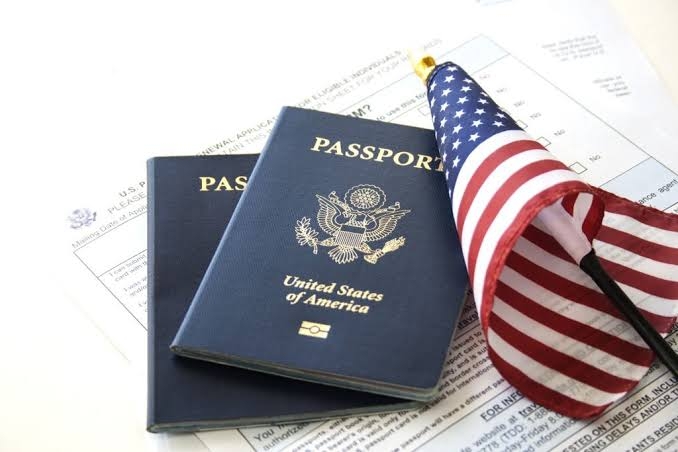Getting a visa rejection can feel discouraging, especially when you’ve spent time, effort, and money on your application. But a rejection doesn’t mean the end of your journey. Many people successfully reapply and get approved after making the right changes. Understanding why your visa was refused and what steps to take next can help you bounce back quickly. This guide explains what to do after a visa rejection, how to improve your chances the second time, and how to reapply with confidence.
1. Understand Why Your Visa Was Rejected
The first and most important step after a visa refusal is to carefully read the rejection notice. Immigration authorities usually provide a written explanation for their decision. These reasons may include missing documents, incomplete information, lack of proof of funds, unclear travel intentions, or suspicion of false documents.

Go through each reason listed in the refusal letter. Check against your original application to identify exactly what went wrong. Sometimes the issue may be technical, such as a mismatch in your travel dates or expired documents. In other cases, the issue could be more serious, like an inadequate justification for your visit or weak ties to your home country. Understanding the reason is the only way to fix the problem effectively.
If you’re unsure about the language or reason in the letter, consider speaking to an immigration advisor or lawyer who can explain the issues clearly.
Read: USA Scholarships That Include Visa Sponsorship
2. Avoid Rushing into a Reapplication
It’s tempting to reapply immediately after a rejection, but that often leads to repeated denials. Immigration authorities may view repeated applications with the same problems as a red flag.
Take time to analyze what went wrong and fix it. Wait until you’re ready with a stronger application. You can only reapply successfully if you’ve addressed the reason(s) for rejection and improved your documents or explanations accordingly.
Use this time to review your documents carefully, prepare better supporting evidence, and clarify any issues that were previously unclear. Don’t waste your money and time by rushing without correcting your earlier mistakes.
3. Fix the Issues in Your Previous Application
Once you understand the reasons for your rejection, work on fixing every issue:
- Provide Missing Documents: If you didn’t include all the required documents before, gather and double-check everything now. Make sure they are current and official.
- Correct Errors: If your forms had errors (wrong name, wrong dates, or incomplete sections), fill them out properly this time.
- Strengthen Your Proof of Intent: Clearly explain your purpose of travel, your return plans, and ties to your home country. If you’re applying for a work visa, include your job offer, company details, and work duties. For visitor visas, show your return flight bookings and financial support details.
- Show Stronger Financial Support: Add updated bank statements, pay slips, or sponsor letters. Explain how your trip will be funded and prove that you can support yourself without overstaying or working illegally.
Every fix should be aimed at answering the concerns raised in your rejection letter.
Read: $25k U.S. Visa Sponsorship Opportunities in 2025
4. Write a Strong Cover Letter Explaining Your Changes
When you reapply, include a clear and honest cover letter that explains:

- That your previous visa was denied
- What the reasons for the refusal were
- How you’ve corrected the issues this time
- Why you now meet the visa requirements
This shows the visa officer that you’ve taken the rejection seriously and have made a genuine effort to submit a better application. The tone of your letter should be respectful and factual. Do not blame the immigration officers or argue emotionally. Simply state your improvements and provide proof.
5. Make Sure Your Supporting Documents Are Strong
Supporting documents play a big role in the success of your visa application. When reapplying, submit stronger and clearer evidence:
- Passport: Make sure it’s valid and not damaged.
- Photos: Provide recent passport-size photos that meet the visa photo requirements.
- Proof of Income or Sponsorship: If someone is sponsoring you, include their bank statements, employment details, and a sponsor letter. If you are self-funded, show strong financial records.
- Accommodation and Flight Plans: Add your hotel booking confirmation and round-trip flight itinerary.
- Employment or Study Ties: Show proof of your job, studies, or responsibilities that require you to return home after your trip.
Make sure every document is clear, well-organized, and consistent with the rest of your application.
Read: Working Holiday Visas: How Young Adults Can Explore the U.S. Job Market Temporarily
6. Be Honest and Consistent

Always be truthful in every part of your application. Even small lies or omissions can lead to serious consequences, including a long-term visa ban. Immigration officers are trained to spot inconsistencies, and many visa systems are connected to international databases that record your previous applications, rejections, and travel history.
If you’ve been denied a visa before, declare it honestly. Trying to hide a past refusal can damage your credibility and lower your chances of approval. It’s better to explain what went wrong and show what has changed in your new application.
Consistency is just as important as honesty. Make sure your information matches across all documents, this includes your employment history, education records, financial statements, and travel history. Conflicting details, like different job titles or overlapping dates, can raise doubts and lead to delays or refusals. A clear and consistent application helps build trust with the visa officer and supports your case effectively.
7. Know When to Seek Help
If you’ve been rejected more than once, or you’re confused about the reason for your denial, it might be time to get professional support. Immigration consultants or visa lawyers understand the rules, requirements, and common rejection patterns. They can give you expert advice tailored to your specific case.
Here’s how a professional can help:
- Understand refusal reasons: They can break down complicated rejection letters and explain what went wrong.
- Improve your documents: They’ll check for weak areas or missing evidence and help you fix them.
- Build a stronger case: They can guide you in presenting your story clearly and legally, so it’s easier for the visa officer to approve your application.
- Avoid costly mistakes: Professionals can spot small issues that might cause another rejection.
Visa rejections are frustrating, but they don’t have to stop your plans. By carefully reviewing the reasons for denial, correcting any issues, and preparing a stronger application, you can turn things around. Always be honest, thorough, and ready to provide clear proof of your intentions. With the right approach, your next application can lead to success. Stay patient, stay informed, and take each step carefully to improve your chances of getting approved.


